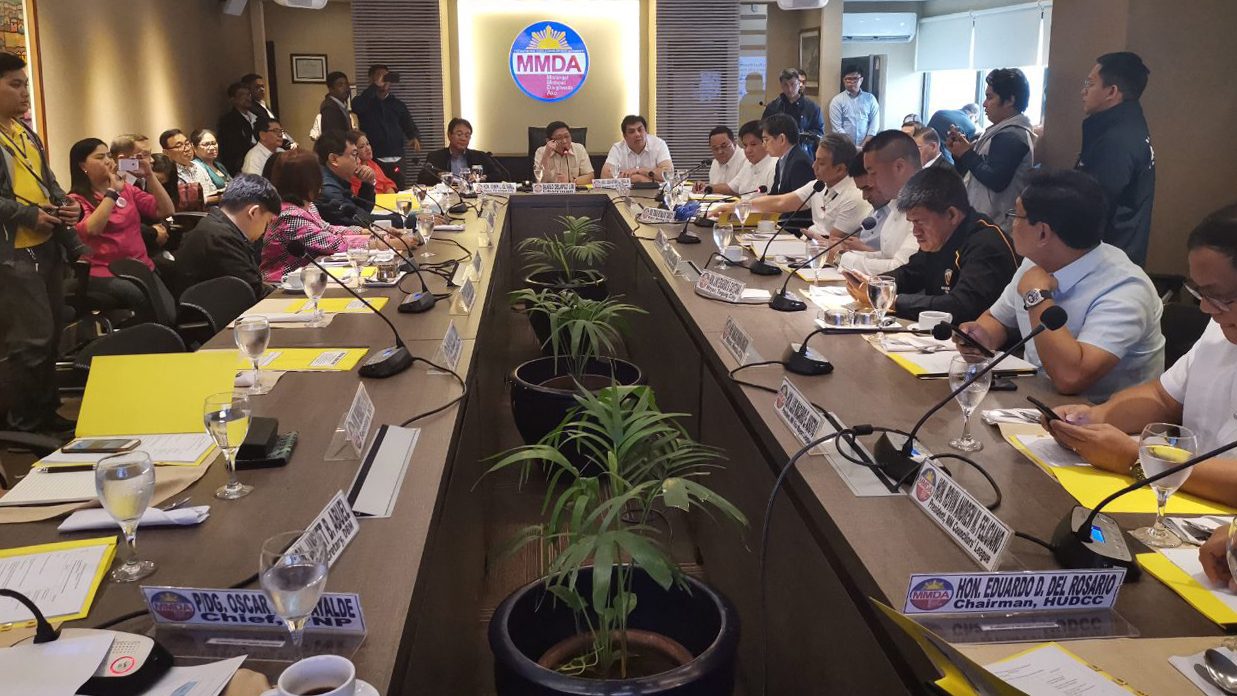SUMMARY
This is AI generated summarization, which may have errors. For context, always refer to the full article.

MANILA, Philippines – Halfway through the 60-day period set by the Department of the Interior and Local Government for local government units to reclaim public roads, Metro Manila mayors identified common challenges and possible permanent solutions during their meeting on Tuesday, August 27.
During the Metro Manila Council (MMC) meeting on Tuesday, the mayors gave the Metro Manila Development Authority (MMDA) progress reports on their respective road clearing operations:
- Caloocan – 100% of major roads cleared
- Las Piñas – 90% of major roads cleared
- Malabon – 100% of major roads cleared, secondary and tertiary roads have yet to be cleared
- Mandaluyong – 100% of major roads cleared
- Manila – 90% of Mabuhay lanes cleared
- Muntinlupa – 100% of major roads cleared
- Pasay – major roads have been cleared, 25% of barangay roads cleared
- Pasig – 50-60% of national and secondary roads cleared, tertiary roads still being cleared
- Pateros – 98% of roads cleared (unspecified)
- Quezon City – majority of Mabuhay lanes cleared
- San Juan – 80% of all roads have been cleared
- Taguig – majority of national roads cleared
Navotas Mayor Toby Tiangco said the city would comply with the deadline, while Parañaque Mayor Edwin Olivarez said that clearing operations were ongoing. Makati Vice Mayor Monique Lagdameo said they were monitoring the compliance of barangay captains.
Marikina Mayor Marcelino Teodoro earlier said the city had complied with the directive ahead of the deadline. Quezon City Mayor Joy Belmonte also made an earlier statement that clearing operations in the city were 83% complete.
After the MMC meeting, Pasig Mayor Vico Sotto said the road inventory has been passed on to the barangay captains, all of whom were compliant with the directive.
When asked why the percentage of cleared roads was only at 50-60%, he said some obstructions return, posing a challenge. The city remains on track in clearing them, however.
Utilizing idle lands
In addressing these recurring obstructions, Sotto believes consistency is key, which is why he wants to keep checking on roads even after they have been cleared.
He proposed to identify areas which could be converted into parking spaces and into a permanent terminal for public transport.
San Juan City Mayor Francis Zamora also proposed to convert idle lands into parking facilities to address the increasing demand for parking spaces.
For government-owned idle lands, the city government will construct and operate the parking facilities. For private lands, owners will have the option to either operate the facilities themselves or let the respective barangays handle the operations.
He said that owners of vacant lots have come forward and expressed their intention to let their land be used as parking areas.
To entice land owners to offer their idle lands, Zamora said they will be provided with incentives. For one, they will no longer be charged with the idle land tax. Secondly, the city government will give them a tax break of up to 5 years.
The city council will determine regulations for these potential parking facilities.
Tough calls
Some mayors raised the tough calls they have to make in clearing roads.
Tiangco said some “complex decisions” were brought up during the meeting, such as barangay halls or daycare centers located at dead ends.
In another case, an encroaching police station was specifically placed in that area because it was a hotspot for hold-ups.
In one case in Pasay, a cross dating back to the 16th century was found to be an obstruction on a public road.
What to do in cases like these?
MMDA General Manager Jojo Garcia said they should document these cases and write to the agencies concerned, so the mayors would not be accused of failing to do their job.
While Garcia acknowledged that some solutions will not be achieved within 60 days, such as constructing alternative barangay halls, he said what’s important is that the mayors are complying with the directive to the best of their ability. – Rappler.com
Add a comment
How does this make you feel?
There are no comments yet. Add your comment to start the conversation.